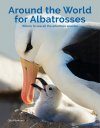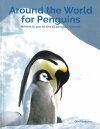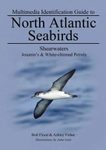Wildlife Guide
By: Otto Plantema(Author)
148 pages, colour photos, colour maps
For readers planning a pelagic expedition, this book will serve as a beautifully illustrated and up to date ‘where to find albatrosses - with background information’.
![Around the World for Albatrosses Around the World for Albatrosses]()
Click to have a closer look
About this book
Customer reviews
Related titles
Recommended titles
About this book
Thinking about albatrosses is thinking about remote, uninhabited, windswept islands in the vast open oceans. As being the ultimate marine family, seeing one of the 21 species of Diomedeidae is often one of the highlights of a birdwatcher’s trip. Many of them aren’t very easy to see for the land based birder and access to the colonies is often restricted and expensive.
Otto Plantema has extensively sailed the oceans in search for albatrosses and other seabirds. He has visited breeding colonies of all but one species (Amsterdam Island Albatross) in order to photograph them. Quite a few species were encountered more often than a couple of times. The book offers a quick and structured overview of where, when and how to see albatrosses. But it is more than a ‘where to watch birds’ book with pictures.
After an introductory chapter which briefly describes taxonomy, ecology, threats, breeding biology and photography, the book describes the main geographical areas which you have to visit if you want to see all the species near or in the colony: Falkland Islands, South Georgia, Tristan da Cunha archipelago, French Subantarctic islands, New Zealand and Subantarctic islands and the (Subtropical) North Pacific (Hawaii, Japan and Galapagos). Most chapters contain a paragraph on history and geography per island followed by a how to visit these islands and the species accounts, which contain: identification (briefly), history, population, distribution, behavior, breeding, threats and status.
Customer Reviews (1)
-
Surely the best bird family in the world?!
By
Keith
28 Oct 2020
Written for Hardback
Subtitled “Where to see all the albatross species”, this is an eye-catching and mouth-watering book that also risks being wallet-emptying if you allow it to take your imagination. To see all of the 21 albatross species in the world involves a fair amount of dedication, but Otto Plantema has almost achieved his goal with Amsterdam Albatross Diomedea amsterdamensis being the only one that has eluded him so far.
Rather than take the traditional taxonomic approach and listing the species by genus, the author takes us on a journey around the world via the Falklands, South Georgia, the Tristan da Cunha Archipelago, the French Subantarctic Islands, New Zealand and the other Subantarctic islands, and finally the Pacific Ocean (Hawaii, Galapagos and Japan). In each area, the author describes the major breeding colonies and explains what is involved to reach them. It is a sharp reminder that some of these outstanding locations are not that easy to reach – which is perhaps just as well given the risks that human visitation can bring.
There are notes on identification, distribution, population, breeding and threats, and bearing in mind the latter, a percentage of profits from the book sales are being donated to the BirdLife Albatross Task Force to fund more work. The photos are excellent, often filling a page or double-page, although a few are much smaller than I wanted to see and could easily have been enlarged with more efficient manipulation of column widths and font size. These images give a complete picture of how each species lives both at sea and on land. I only spotted one error where a Salvin’s Albatross Thalassarche salvini has ended up on a page with the Campbell Albatrosses Thalassarche impavida.
If, like me, you have been fortunate to visit some of these albatross colonies, then the good memories of your travels will flood back. If you have not yet seen an albatross, then you will surely want to. Thankfully conservationists are now having a positive impact on survival rates of these majestic birds in some (but not all) areas. The fact that only one of the 21 albatross species is not considered to be threatened should be a concern to all of us.
8 of 9 found this helpful
-
Was this helpful to you? Yes No
Wildlife Guide
By: Otto Plantema(Author)
148 pages, colour photos, colour maps
For readers planning a pelagic expedition, this book will serve as a beautifully illustrated and up to date ‘where to find albatrosses - with background information’.
"[...] an eye-catching and mouth-watering book. [...] Rather than taking a traditional taxonomic approach and listing the species by taxonomic sequence, the author takes us on a journey around the world [...] some of these albatross colonies, then the good memories of your travels will flow back. If you have not yet seen an albatross then after reading this book you will surely want to [...]"
– Keith Betton, British Birds 113, April 2020
"[...] The first thing to notice is the stunning quality of the photographs of all species. [...] Second the book is very easy reading, in fact it is a quick and structured overview of where, when and how to see the albatrosses. [...] This book is not a field guide nor a monograph on the subject, but while planning your pelagic expedition wíll serve as a beautifully illustrated and up to date ‘where to find albatrosses - with background information’"
– Rinse van der Vliet, Dutch Birding































